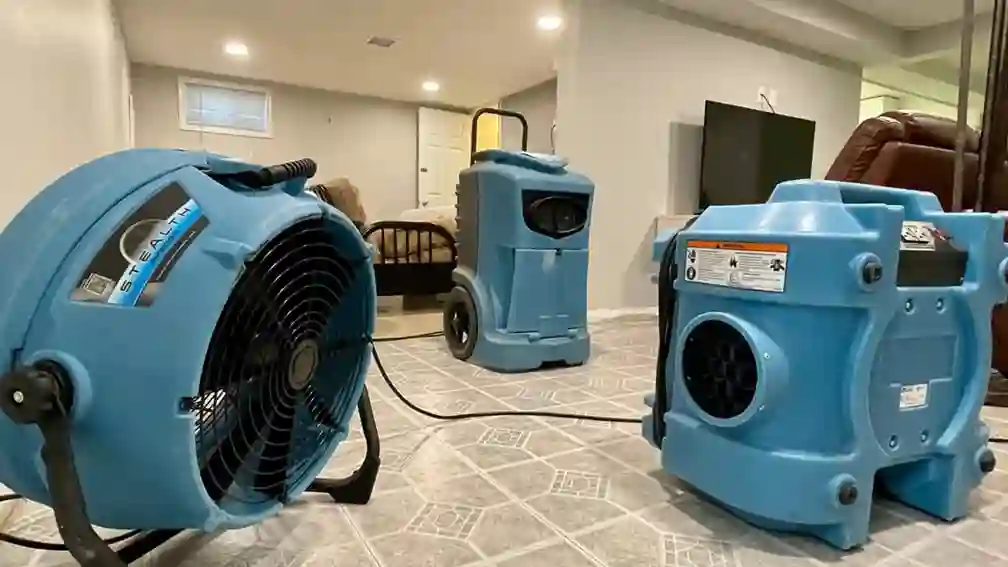A homeowner’s biggest fear might be water damage, which can seriously destroy the property and its belongings. When a calamity happens, the process of restoring water damage becomes essential to save the damaged regions and stopping more damage. We’ll explore the methods that professionals have found effective for the drying process of water damage repair in this extensive guide, giving you the tools you need to take on this difficult task.
Understanding the Importance of Proper Drying
The foundation of every successful water damage repair effort is the drying process. In addition to reducing the immediate damage, proper drying stops the formation of mold and mildew, which may be extremely dangerous to one’s health. Inadequate response to water damage might result in long-term structural problems that jeopardize your home’s structural stability.
Assessing the Extent of the Damage
Determining the full degree of the damage is the first stage in the drying process for water damage repair. This entails examining the impacted regions closely, identifying the water’s source, and assessing the saturation level. The right drying methods and tools will be chosen with this information in mind.
Selecting the Right Drying Equipment
Depending on the scope and severity of the water damage, various drying tools may be employed. These can include:
- High-powered air movers
- Dehumidifiers
- Specialized drying mats
- Thermal imaging cameras
The professionals will pick and arrange these instruments with care in order to optimize the drying process’ effectiveness, making sure that every nook and cranny is taken care of.
Monitoring the Drying Process
Effective water damage restoration is not a one-and-done affair. The drying process requires continuous monitoring and adjustment to ensure that the desired moisture levels are achieved. Professionals will take regular moisture readings and make necessary adjustments to the equipment and airflow to optimize the drying.
The Importance of Proper Ventilation
Adequate ventilation is crucial during the water damage restoration drying process. By increasing airflow and promoting evaporation, ventilation helps to accelerate drying and prevent the buildup of harmful mold and mildew. Experts will strategically position fans and open windows or doors to facilitate this crucial step.
Addressing Hidden Moisture
Water can often seep into hard-to-reach areas, such as behind walls, under floors, or within insulation. These hidden pockets of moisture must be identified and addressed to prevent future issues. Professionals may utilize advanced techniques, like moisture meters or thermal imaging, to locate and address these hidden problem areas.
The Importance of Proper Disposal
After the drying process is over, it’s crucial to dispose of any contaminated or damaged items properly. This covers anything that has been impacted by the water damage, such as insulation, drywall, or carpets. Mold growth and the spread of other dangerous pollutants might result from improper disposal of these materials.
Collaborating with a Water Damage Restoration Company
In the event of significant water damage, it’s recommended to enlist the services of a reputable water damage restoration company Suffolk County. These professionals have the expertise, equipment, and resources to efficiently and effectively address the issue, minimizing the long-term impact on your property. When searching for a reliable service provider, be sure to look for one with a proven track record and a commitment to using the latest industry standards and practices.
Preventing Future Water Damage
Proactive measures to avoid more water damage are just as vital as the drying process for water damage restoration. This may include:
- Regularly inspecting and maintaining plumbing systems
- Ensuring proper drainage around the home
- Addressing any existing leaks or moisture issues promptly
- Considering the installation of water detection and shutoff systems
Homeowners may prevent expensive and inconvenient repercussions from water damage by taking preventative measures and seeking professional assistance when necessary.
In conclusion, the drying process for water damage repair is a difficult and varied task that calls for the knowledge of seasoned experts.
Through comprehension of the crucial procedures and the need for adequate drying, homeowners may guarantee the restoration of their property to its initial state prior to damage and safeguard against any subsequent water-related problems. Keep in mind that when it comes to water damage, time is of the utmost importance. The best approach to lessen the effects and ensure the long-term health of your property is to act swiftly under the advice of specialists.


Comment here